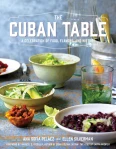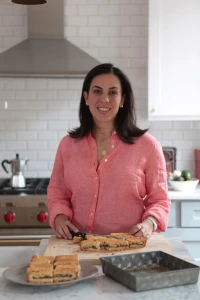Pan de Muerto
 I first came across pan de muerto, or “bread of the dead” in the long stretch of Mexican bakeries and stores in Sunset Park. Placed on family altars for el Día de los Muertos (November 1 & 2) as an offering to their deceased loved ones, I asked everyone I knew how they’d celebrated in Mexico and whether they continued to do so in the States.
I first came across pan de muerto, or “bread of the dead” in the long stretch of Mexican bakeries and stores in Sunset Park. Placed on family altars for el Día de los Muertos (November 1 & 2) as an offering to their deceased loved ones, I asked everyone I knew how they’d celebrated in Mexico and whether they continued to do so in the States.
 For a population associated with movement and migration, it seemed a poignant combination between a spiritual observance and an earthly tradition, very much tied to a time and place. Loved ones could be remembered and they’re favorite foods prepared for the ofrenda, almost anywhere, but a path of marigolds and candles couldn’t possibly reach a Mexican cemetery from a Brooklyn apartment. Researching a piece for another site, I read everything I could about the holiday.
For a population associated with movement and migration, it seemed a poignant combination between a spiritual observance and an earthly tradition, very much tied to a time and place. Loved ones could be remembered and they’re favorite foods prepared for the ofrenda, almost anywhere, but a path of marigolds and candles couldn’t possibly reach a Mexican cemetery from a Brooklyn apartment. Researching a piece for another site, I read everything I could about the holiday.
 I learned that you might receive a sugar skull with your name written across it as a gift, that monarch butterflies (their migration coincides with the holiday in some areas) were believed to be returning souls, and suddenly saw calacas everywhere. Deciding to skip Halloween Halloween, I made my way to El Museo del Barrio, itself on the border between the Upper East Side and Spanish Harlem, to see Imperial Silence: Una Opera Muerta. Subtitled “A Dead Opera in Four Acts” featuring Los Cuatro Vientos, I watched a skeletal band of mariachis sing, dance, and laugh, reminding us we’d be with them soon enough – a perfect way to celebrate the absurdity of death in the face of life, and vice-versa.
I learned that you might receive a sugar skull with your name written across it as a gift, that monarch butterflies (their migration coincides with the holiday in some areas) were believed to be returning souls, and suddenly saw calacas everywhere. Deciding to skip Halloween Halloween, I made my way to El Museo del Barrio, itself on the border between the Upper East Side and Spanish Harlem, to see Imperial Silence: Una Opera Muerta. Subtitled “A Dead Opera in Four Acts” featuring Los Cuatro Vientos, I watched a skeletal band of mariachis sing, dance, and laugh, reminding us we’d be with them soon enough – a perfect way to celebrate the absurdity of death in the face of life, and vice-versa.

Pan de Muerto/Bread of the Dead
Adapted and translated to English from Cocina de la Familia: mas de 200 recetas auténticas by Marilyn Tausend with Miguel Ravego, the original recipe is attributed to Paula Solis. Bread recipes have always been tricky for me because they don’t always behave the way they’re supposed to. I end up staring at the dough, willing it to rise. This is the second recipe I’ve tried from this book and whatever she says is going to happen, happens. The dough pulled away, formed and doubled easily. The decorations were trickier than I thought. During the last rising, the bones I’d carefully formed bulked up and the calavera in the middle expanded. For dead bread, it was very much alive. I’d fussed with it so much that when it baked it looked like the skull was trying to breakthrough, but the effect worked.
For the dough:
2 tablespoons of anise seeds
2 packages (1/2 ounce) of active dry yeast
1 cup (2 sticks) of unsalted butter, melted and cooled
1/2 cup sugar
6 egg yolks, lightly beaten
2 eggs, lightly beaten
1 1/2 teaspoons of orange blossom water
1 tablespoon of orange zest, finely grated
1/2 teaspoon sea salt
4-5 cups of unbleached, all-purpose flour
For the glaze:
1 egg, lightly beaten combined with 1 tablespoon of water
For the toppings:
2 tablespoons of unsalted butter, melted
1/4 cup of sugar
Bring 1/4 cup of water to a boil and pour over anise seeds in a heatproof bowl. Set aside until cool, about 15 minutes.
In the bowl of a heavy-duty mixer, combine 1/2 cup of warm water (110-115 degrees) and yeast. Let stand until yeast dissolves and bubbles, stirring occasionally, about 8 to 10 minutes.
Strain the cooled anise water into the yeast and discard the seeds. Stir in the melted butter, sugar, yolks, eggs, orange blossom water, orange zest, and salt to combine. Using a mixer fitted with the dough hook attachment on low speed, add four cups of flour, one cup at a time. Continue to beat on medium, until the dough just begins to pull away from sides of bowl.
Pour dough onto a lightly floured surface and knead in remaining cup of flour, as needed, until dough is smooth and elastic, about 10 minutes. Form dough into a ball place into a large, greased mixing bowl, immediately turning over so that all sides are greased. Cover with a piece of lightly greased plastic wrap and set aside in a warm, draft free place until doubled in bulk, about 1 1/2 hours. At this point it can be refrigerated over night and brought to room temperature before proceeding.*
Pour dough onto a lightly floured surface and punch down. Divide into equal parts or keep whole to make one large round. Pinch off 1/4 of each piece for decorations. Line a baking sheet with a non-stick liner or greased parchment paper and set aside.
Form the large part of each piece into a ball. With the flat of your hand, push each ball down the dough to form a circle about 1 inch thick and place on baking sheet. With the remaining dough, form one small ball, about 1 1/2 to 2 inches, for each round and one long rope of dough to shape the “bones”. In the center of each round, make a small indentation, form the bottom side of each ball into a point and attach to the round. Using the long rope of dough, cut off pieces as needed to form into long bones and attach to the ball in the center so that they radiate outwards. Repeat with each round.
Lightly cover and set aside in a warm, draft free place until doubled in bulk, about 45 to 60 minutes.
Preheat the oven to 375 degrees.
Gently brush egg glaze over dough and bake until golden brown, 25 to 30 minutes for small pieces and up to 45 minutes for larger loaves. Remove from oven and place on cooling rack. Immediately brush with melted butter and sprinkle with sugar. Set aside to cool.








I enjoyed you piece here.
Thank you!